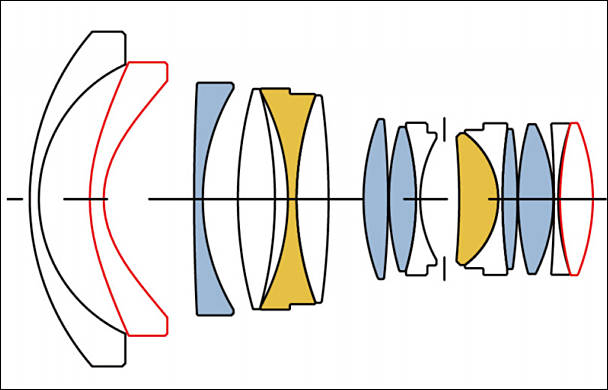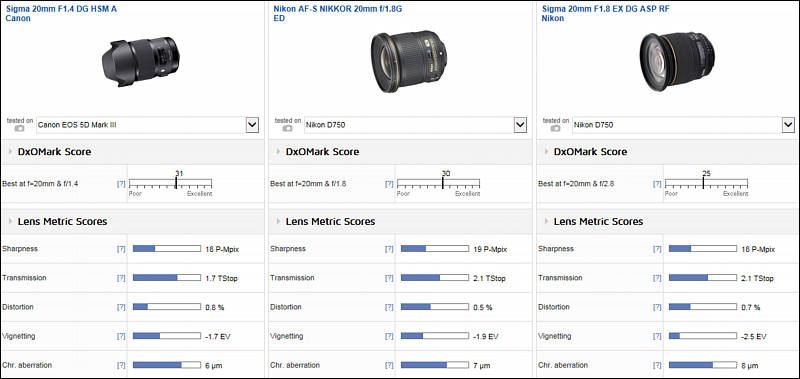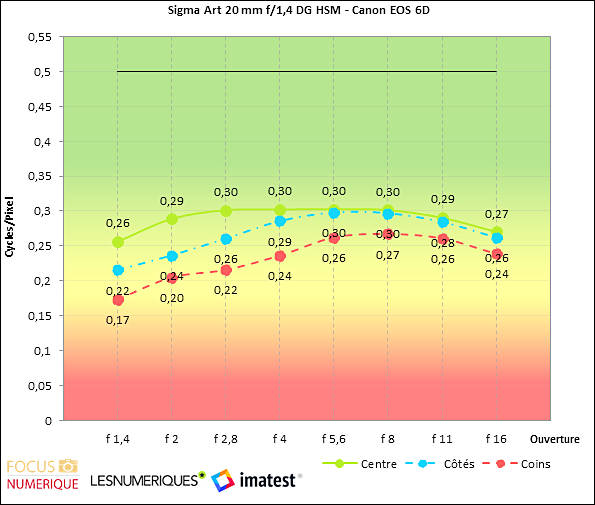
It allows to keep PV going, with more focus towards AI, but keeping be one of the few truly independent places.
-
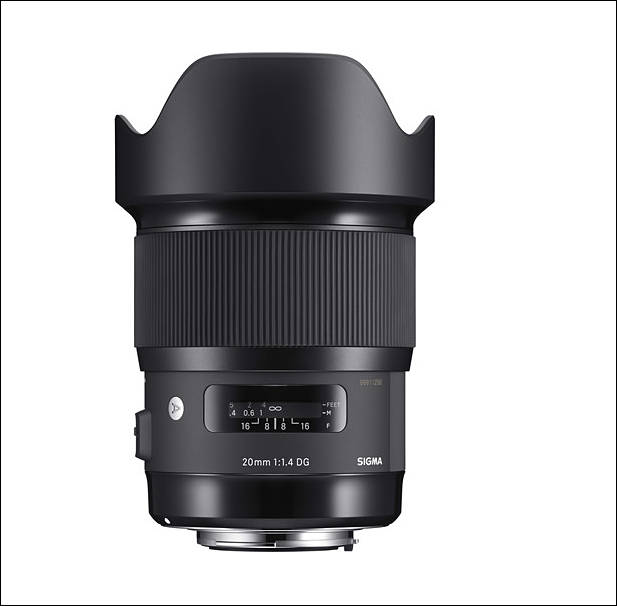
- Made for FF
- F1.4 to F16 apertures
- FLD and Special Low Dispersion Elements
- Super Multi-Layer Coating
- Hyper Sonic AF Motor
- Full-Time Manual Focus Override
- Rounded 9-Blade Diaphragm
- Thermally Stable Composite Material
- Brass Bayonet Mount
- $899 at https://www.amazon.com/Sigma-20mm-F1-4-Lens-Canon/dp/B016OI8EEA/
http://www.sigma-global.com/en/lenses/cas/product/art/a_20_14/

 zebra164.jpg617 x 606 - 29K
zebra164.jpg617 x 606 - 29K -
PR
Incredible rendering performance delivers unprecedented visual experiences. Enjoy enhanced control of light and composition.
SIGMA has extensive experience in leveraging its advanced design capabilities and leading-edge technologies to craft large-aperture prime lenses that bring out the full potential of ultra-high-megapixel DSLRs. As its latest achievement in this category, SIGMA has created an ultra-wide-angle lens with F1.4 brightness. With a focal length of 20mm and F1.4 aperture, this lens delivers outstanding large-aperture brightness and bokeh, delivering unprecedented visual experiences. Allowing the photographer to leverage the perspective provided by the wide-angle and the shallow depth of field provided by the large aperture, this lens is ideal not only for such ultra-wide-angle subjects as landscapes and starry skies, but also for snapshots in low light, indoor photography, portraits with a natural bokeh effect, and much more.
Advanced technologies make possible a 20mm F1.4 lens
World’s first* 20mm F1.4 lens — thanks to advanced large-diameter aspherical lens manufacturing technologies
To offer an ultra-wide-angle 20mm focal length and F1.4 brightness at wide-open aperture, this lens incorporates a large double aspherical lens 59mm in diameter. Lenses of this type had been considered extremely difficult to manufacture, but SIGMA took on the challenge to realise an F1.4 ultra-wide-angle lens that fulfils the strict performance requirements of the SIGMA Art line. What made this breakthrough possible were SIGMA’s advanced manufacturing technologies, which the company has developed over time by producing a wide range of ultra-wide-angle and large-aperture lenses. For example, milestone lenses such as SIGMA 12-24mm F4.5-5.6 EX DG ASPHERICAL HSM, SIGMA 8-16mm F4.5-5.6 DC HSM, and SIGMA 18-35mm F1.8 DC HSM | Art were completely original products that helped SIGMA develop outstanding design and production know-how and its current high-precision, high-efficiency production system. In turn, these advances made possible the new SIGMA 20mm F1.4 DG HSM | Art. Moreover, SIGMA’s advanced optical design minimises distortion, transverse chromatic aberration, sagittal coma flare, and the reduction of brightness toward the edges of the image. Delivering top performance even at wide-open aperture, this lens can be considered the culmination of SIGMA’s Art line.
Minimised chromatic aberrations
This lens minimises chromatic aberrations, a common issue in large-aperture ultra-wide-angle lenses. It features two FLD (“F” Low Dispersion)* glass and five SLD (Special Low Dispersion) glass elements to minimise transverse chromatic aberration, which is mainly visible around the edge of the image. The optimised lens power distribution helps minimise axial chromatic aberration. As a result, this lens delivers high image quality in every situation without colour smearing, and its rendering performance is consistently sharp with high contrast.
FLD glass is ultra-low-dispersion glass that offers performance of the highest level. Highly transparent, its refractive index and dispersion are extremely low as compared to conventional types of glass. It offers characteristics very similar to those of fluorite, which is valued for its high anomalous dispersion. These characteristics minimise residual chromatic aberration (secondary spectrum), which cannot be corrected by ordinary optical glass, while helping to produce sharp, high-contrast images.
Minimised distortion
Distortion is a common issue in wide-angle lenses, and it is not possible to correct it simply by changing the aperture value. For this reason, a lens must be designed from the start to minimize this issue. By adjusting the incidence angle of light starting with the first lens element and incorporating optimally positioned aspherical glass elements, the SIGMA 20mm F1.4 DG HSM | Art lens minimizes distortion throughout the entire image.
Designed to minimize flare and ghosting
From the start of the design process, SIGMA took steps to minimize flare and ghosting and establish an optical design that is resistant to strong incidental light sources such as backlight. At the prototyping stage, SIGMA used not only simulations but actual photographic experiments to assess flare and ghosting under multiple criteria, identify the causes of these issues under a wide range of situations, and take measures to mitigate them. In addition, SIGMA’s Super Multi-Layer Coating helps further reduce flare and ghosting and provide sharp, high-contrast images even in backlight conditions.
Top-level performance for the ultra-high-megapixel era
At the dawn of the film camera, there was very little high-sensitivity film, and bright lenses that worked well in low-light conditions came to be known as “high-speed lenses.” These lenses are ideal for shooting indoors, in the evening, under cloudy skies, or in any low-light situation. Since the SIGMA 20mm F1.4 DG HSM | Art provides the benefits of an ultra-wide angle lens with minimal distortion, it is ideal for photographing landscapes, starry skies, and architecture. In addition to capturing wide-angle shots with the whole scene in focus, the photographer can leverage wide-open aperture to take snapshots with the subject in focus and the background blurred with an attractive bokeh effect. Designed for ultra-high-megapixel digital cameras, this high-performance lens delivers outstanding resolution and high-clarity image quality even at wide-open aperture.
Art line delivers high-level artistic expression
SIGMA is organizing all its interchangeable lenses into three product lines: Contemporary, Art, and Sports, each with a distinctive concept. Designed with a focus on sophisticated optical performance and abundant expressive power, our Art line lenses deliver high-level artistic expression. Offering astonishing rendering performance that meets the highest standard, they are perfect for landscapes, portraits, still-lifes, close-ups, and casual snaps. They are made for the kind of photography that unleashes the inner artist. A powerful ally in every genre of photography, SIGMA’s Art line lenses excel both in the studio for formal works and outdoors for impressive shots of architecture, starry skies, and many other scenes.
Metal lens cap available (sold separately)
Matching the high-quality finish of the lens exterior, the optionally available metal lens cap LC907-02 will go on sale simultaneously with the lens. Featuring materials identical to those of the lens barrel, this metal lens cap establishes a new level of unity within SIGMA’s new lens lines.
High-quality design features
In our new product lines, the lens caps and AF/MF switches are newly designed to improve usability. To ensure precise operation, internal parts feature generous use of metal and Thermally Stable Composite (TSC)*, which is highly compatible with metal parts. The lens barrel is engraved with the year of release for instant access to this information.
TSC offers thermal expansion characteristics similar to those of aluminium. Parts made with TSC deform less, making lens construction of extremely high precision possible. As compared to polycarbonate containing 20% glass, a commonly used material, TSC offers approximately 70% higher elasticity. As compared to polycarbonate containing 30% glass, it offers 25% higher elasticity. (Comparison is between SIGMA-produced components.)
Evaluation with SIGMA’s own MTF measuring system: A1
We used to measure lens performance with a Modulation Transfer Function (MTF) measuring system using conventional sensors. However, we have developed our own proprietary MTF measuring system (A1)* using 46-megapixel Foveon direct image sensors. Even previously undetectable high-frequency details are now within the scope of our quality control inspections. All SIGMA 20mm F1.4 DG HSM | Art lenses are checked using this A1 system before they are shipped.
Rounded diaphragm
The 9-blade rounded diaphragm creates an attractive blur in the out-of-focus areas of the image.
Hyper Sonic Motor ensures high AF speed
The Hyper Sonic Motor (HSM) ensures silent, high-speed autofocusing, while the optimized AF algorithm helps realize even smoother AF performance. At any time during AF, users may access MF simply by rotating the focus ring. This feature makes faster focus adjustment possible, since there is no need to use the AF/MF focus mode switch. Also, the optional SIGMA USB DOCK allows the user to set the lens to conventional full-time manual focus override.
Brass bayonet mount
This lens features a brass bayonet mount of highly precise and durable construction. A special surface treatment enhances the mount’s strength and long-term wear-resistance.
Mount Conversion Service available
An experienced lens manufacturer offering a diverse range of interchangeable lenses, SIGMA provides the innovative Mount Conversion Service, in which we change the mount of a lens in one of our new product lines to another mount of your choice (charges apply). This service can give new life to your favorite lenses when you wish to use them with a different camera body.
-
Hands on
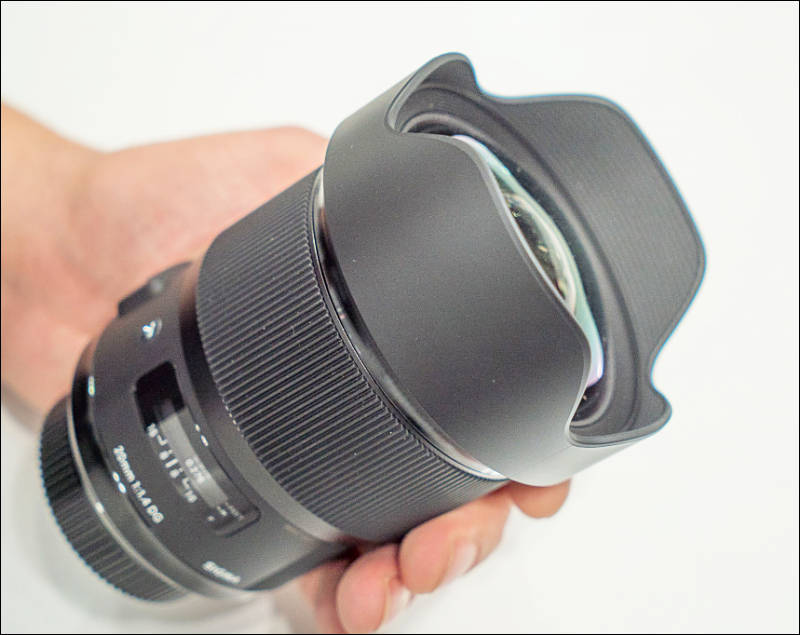
http://www.dpreview.com/articles/1377431932/20-20-vision-hands-on-with-sigma-s-20mm-f1-4-art

 zebra208.jpg800 x 635 - 57K
zebra208.jpg800 x 635 - 57K -
I remember when sigma was the second option for a lens, a cheaper option, most of times with lower optic quality.
Today we see sigma doing the almost impossible, 18-35mm 1.8, 20mm 1.4 and so on...
When Sgima did the 20mm 1.8 I was amazed, then Nikon followed Sigma and did his better version.
I was also surprised by this 1.4 lens, but the corner performance is a little bit stretched when the background is out of focus, but not so bad, when everything is in focus the corner performance is good. Interesting thing is the amount of vignetting is small in 1.4 aperture.
I think this lens will be amazing wide open in Super35 sensors.
-

 zebra281.jpg800 x 530 - 91K
zebra281.jpg800 x 530 - 91K -
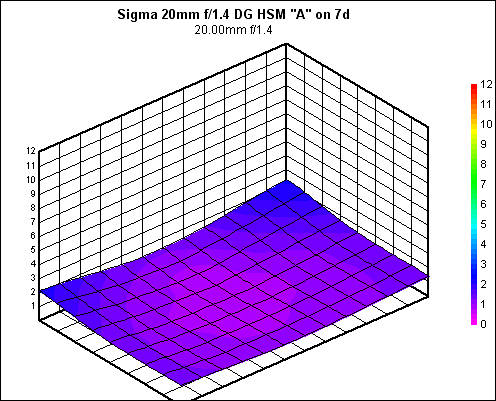
Sharpness is the name of the game for this 20mm version -- this lens is sharp! On a full-frame camera, even at ƒ/1.4, the Sigma 20mm ƒ/1.4 impresses with excellent center sharpness. Not surprisingly, corners display noticeable softness at ƒ/1.4, but a good portion of the frame, otherwise, remains sharp. Stopping down a bit, especially to around ƒ/2.8, really sharpens things up around the edges. The lens remains very sharp throughout the aperture range, even into the smaller apertures; however, we do see slight diffraction-related softness appear at ƒ/16.
http://slrgear.com/reviews/showproduct.php/product/1832/cat/30

 zebra311.jpg496 x 401 - 65K
zebra311.jpg496 x 401 - 65K -

 zebra350.jpg800 x 451 - 125K
zebra350.jpg800 x 451 - 125K -
Centre sharpness remains high through from f/2 to f/11, with f/16 being adversely affected by diffraction. The edges aren't quite as sharp as the center, with f/4-f/11 producing the sharpest results.
Samples too bad to post.
http://www.photographyblog.com/reviews/sigma_20mm_f1_4_dg_hsm_review/
-

Sharpness is impressive. Even at open aperture the center is already excellent, becoming outstanding from f/2 to f4 and remaining at excellent levels right through to f/16. The edges do yield lower figures, but are still at the level of excellent all through the aperture range until it drops slightly to very good sharpness at f/16.
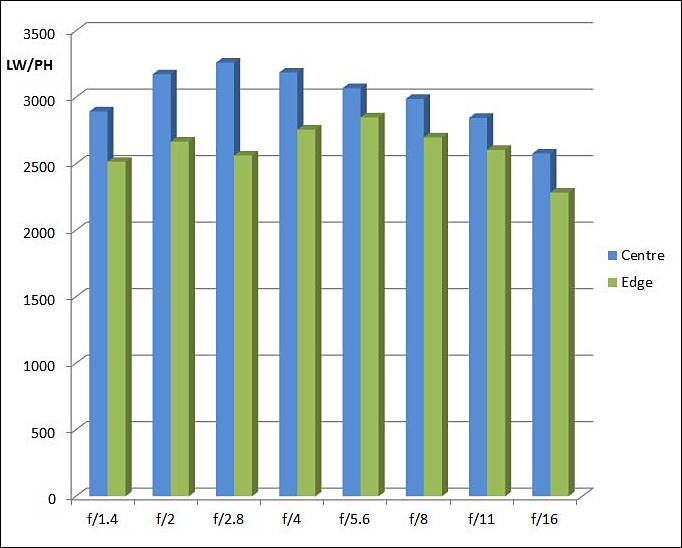
https://www.ephotozine.com/article/sigma-20mm-f-1-4-dg-hsm-art-review-28425

 zebra405.jpg800 x 522 - 105K
zebra405.jpg800 x 522 - 105K
 zebra404.jpg682 x 548 - 54K
zebra404.jpg682 x 548 - 54K -

 zebra453.jpg800 x 379 - 50K
zebra453.jpg800 x 379 - 50K -

 zebra495.jpg595 x 505 - 46K
zebra495.jpg595 x 505 - 46K -

 zebra525.jpg709 x 469 - 47K
zebra525.jpg709 x 469 - 47K -

Crops show a very good performance of this lens. At f1.4 it's very sharp in the center with some softness in the DX-corner and a hazy FX-corner that shows some coma. Compared to its longer sibling, the 24/1.4 Art, the new lens produces a sharper DX-corner and has also less coma in the FX-corner. Focus was optimized for the outer crops here but there is really only very little field-curvature. Stopping down to f2.8 produces very good sharpness and contrast across the full-frame sensor. Diffraction is clearly setting in at f11. Distortions seem pretty low for such a wide-angle lens.
http://www.cameralabs.com/reviews/Sigma_20mm_f1-4_DG_HSM_Art/

 zebra595.jpg800 x 525 - 99K
zebra595.jpg800 x 525 - 99K -

This lens is very sharp even at f/1.4. A modest improvement in contrast is seen at f/2, but with razor sharp results at this aperture, further stopping down results in no visible improvements.
http://www.the-digital-picture.com/Reviews/Sigma-20mm-f-1.4-DG-HSM-Art-Lens.aspx

 zebra637.jpg646 x 431 - 44K
zebra637.jpg646 x 431 - 44K -
I'm also impressed at the amount of distortion. And sharp at 1.4? Sigma seems to really know what they're doing
-

 zebra806.jpg800 x 526 - 94K
zebra806.jpg800 x 526 - 94K -
I played with one of these and what impressed me most was some lights hear the edge of the image (at f1.4) were just white lights, not white in a big blob of purple. It is a kilo of glass and unstabilised (not unsurprisingly) and the coma didn't entirely grab me.
-
New firmware
- It becomes fully functional with the Canon Digital Cinema Camera EOS C300 Mark II.
- For SIGMA 20mm F1.4 DG HSM | Art Canon, this lens firmware update also corrects the phenomenon that the images show some underexposure when “Evaluative Metering” or “Center-weighted Average Metering” is selected on Canon EOS-1D X Mark II.
-
New lens firmware
This firmware allows compatibility with Canon’s in-camera Lens Aberration Correction function to enable correction matching the optical characteristics of each lens. It also corrects the phenomenon that abnormal images appear or operation errors occur when the function is enabled. This firmware also corrects the phenomenon whereby the continuous shooting speed decreases in certain combinations with some cameras when used with the 14-24mm F2.8 DG HSM | Art for Canon, and the phenomenon whereby the AF speed occasionally becomes unstable when used with the 100-400mm F5-6.3 DG OS HSM | Contemporary for Canon.
For customers who own the SIGMA USB DOCK and applicable products listed below, please update the firmware via SIGMA Optimization Pro. Before updating the firmware using the SIGMA USB DOCK, please ensure to update SIGMA Optimization Pro to Ver. 1.4.1 or later for Windows, and Ver. 1.4.0 or later for Macintosh.
Applicable Products
- SIGMA 14mm F1.8 DG HSM | Art for CANON
- SIGMA 20mm F1.4 DG HSM | Art for CANON
- SIGMA 24mm F1.4 DG HSM | Art for CANON
- SIGMA 12-24mm F4 DG HSM | Art for CANON
- SIGMA 50-100mm F1.8 DC HSM | Art for CANON
Benefits of the Update
It has ensured compatibility with Canon’s in-camera Lens Aberration Correction function, which enables correction matching the optical characteristics of the attached lens.* It has corrected the phenomenon that abnormal images appear or operation errors occur when Canon’s in-camera Lens Aberration Correction function is enabled.
- Compatible Canon camera models:EOS-1DX mark II, EOS 5Ds, EOS 5Ds R, EOS 5D mark IV, EOS 6D mark II, EOS 80D, EOS 8000D(EOS Rebel T6s, EOS 760D), EOS 9000D(EOS 77D) , EOS Kiss x8i(EOS Rebel T6i, EOS 750D), EOS Kiss x9i(EOS Rebel T7i, EOS 800D), EOS Kiss x9(EOS Rebel SL2, EOS 200D)
https://www.sigma-global.com/jp/download/lenses/sigma-optimization-pro/
Howdy, Stranger!
It looks like you're new here. If you want to get involved, click one of these buttons!
Categories
- Topics List23,976
- Blog5,724
- General and News1,351
- Hacks and Patches1,153
- ↳ Top Settings33
- ↳ Beginners255
- ↳ Archives402
- ↳ Hacks News and Development56
- Cameras2,361
- ↳ Panasonic991
- ↳ Canon118
- ↳ Sony156
- ↳ Nikon96
- ↳ Pentax and Samsung70
- ↳ Olympus and Fujifilm100
- ↳ Compacts and Camcorders300
- ↳ Smartphones for video97
- ↳ Pro Video Cameras191
- ↳ BlackMagic and other raw cameras116
- Skill1,961
- ↳ Business and distribution66
- ↳ Preparation, scripts and legal38
- ↳ Art149
- ↳ Import, Convert, Exporting291
- ↳ Editors191
- ↳ Effects and stunts115
- ↳ Color grading197
- ↳ Sound and Music280
- ↳ Lighting96
- ↳ Software and storage tips267
- Gear5,414
- ↳ Filters, Adapters, Matte boxes344
- ↳ Lenses1,579
- ↳ Follow focus and gears93
- ↳ Sound498
- ↳ Lighting gear314
- ↳ Camera movement230
- ↳ Gimbals and copters302
- ↳ Rigs and related stuff272
- ↳ Power solutions83
- ↳ Monitors and viewfinders339
- ↳ Tripods and fluid heads139
- ↳ Storage286
- ↳ Computers and studio gear560
- ↳ VR and 3D248
- Showcase1,859
- Marketplace2,834
- Offtopic1,319
Tags in Topic
- sigma 69


